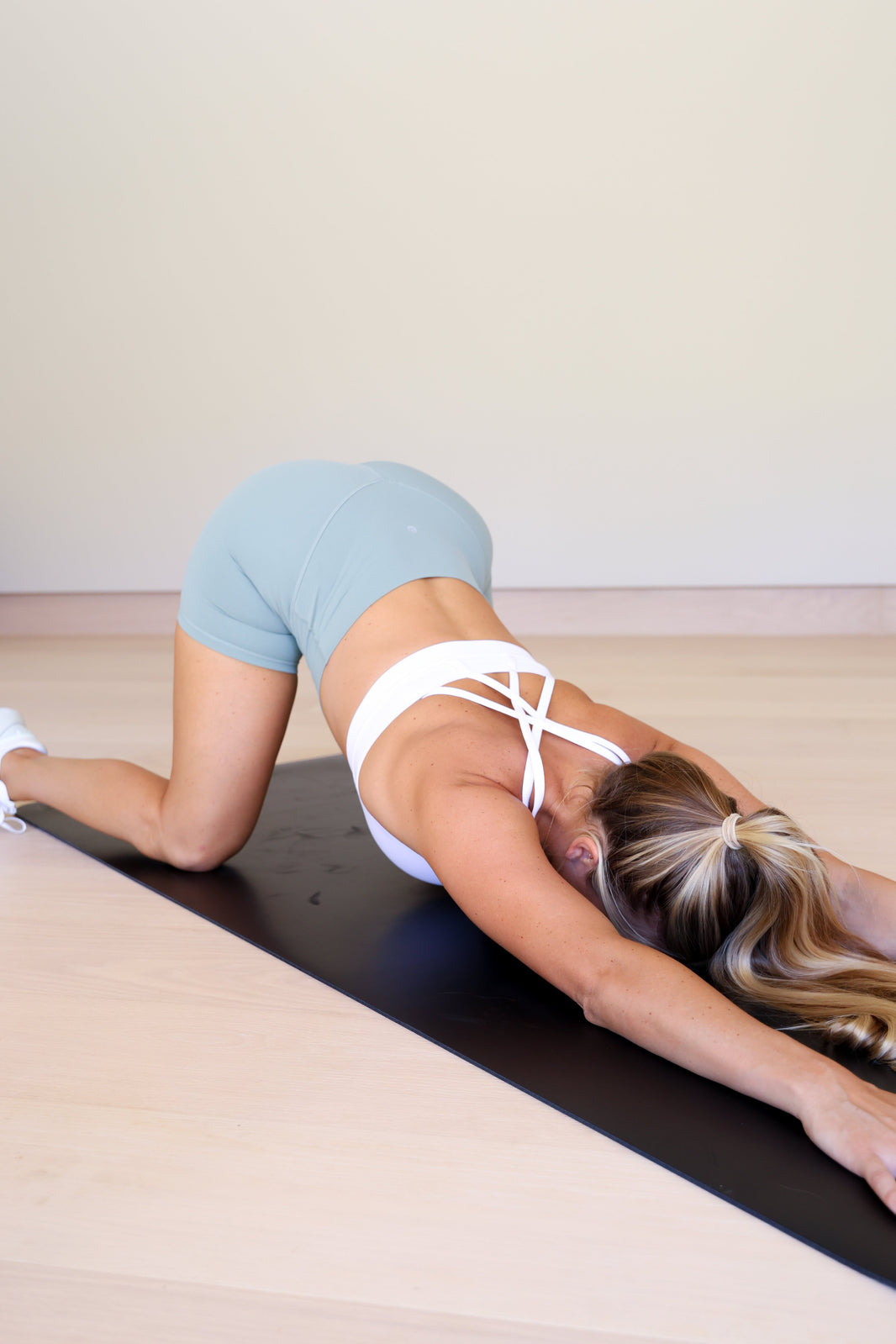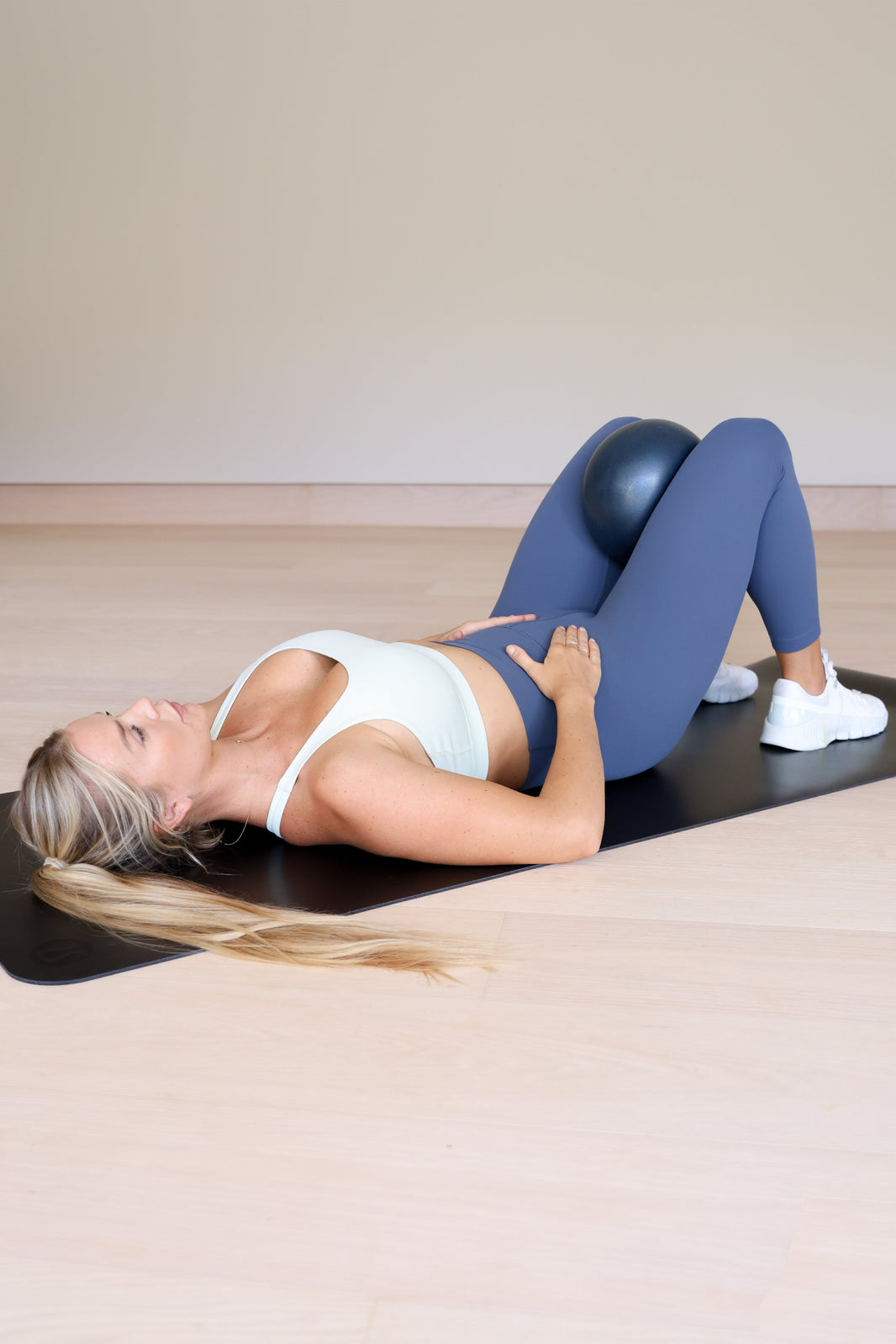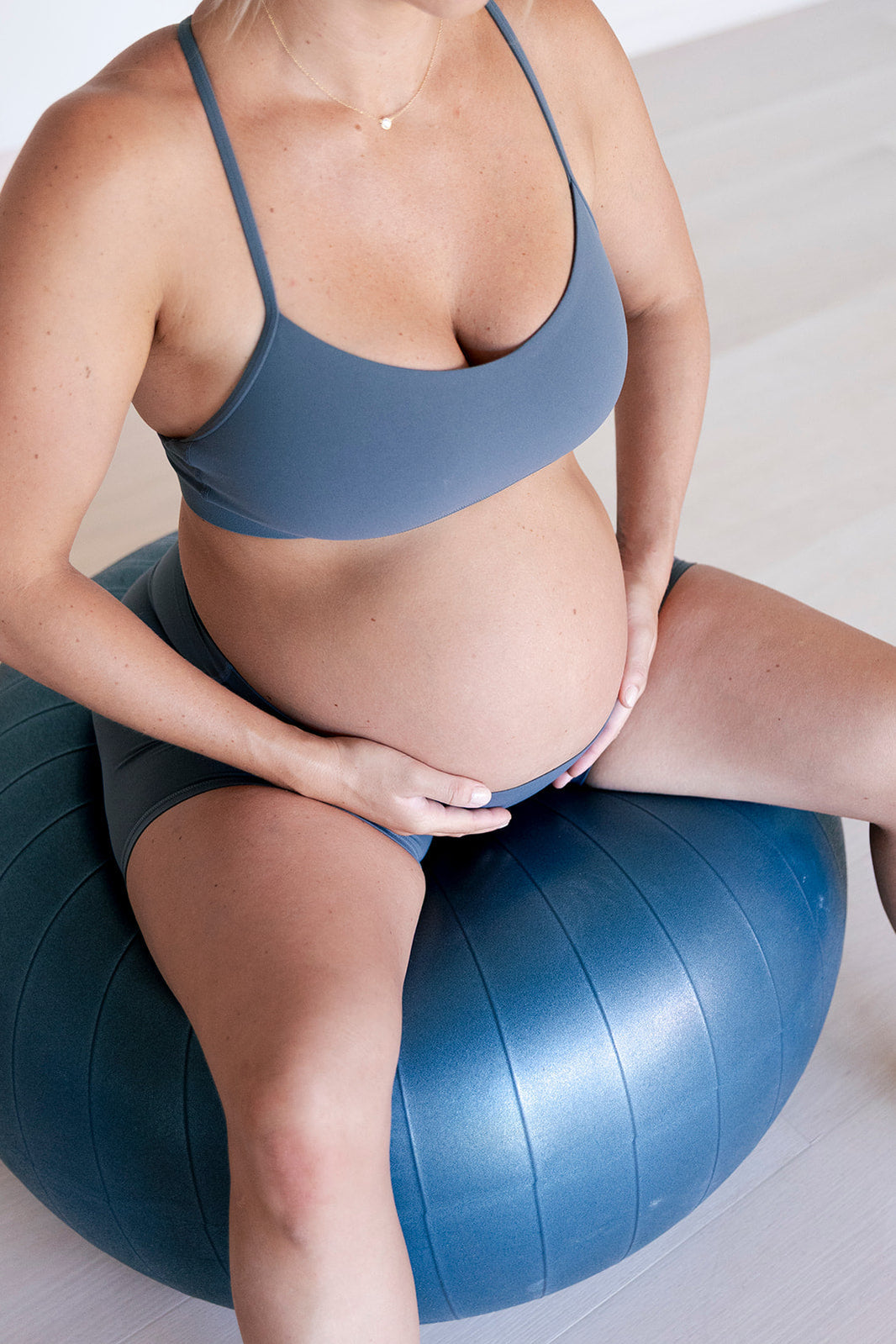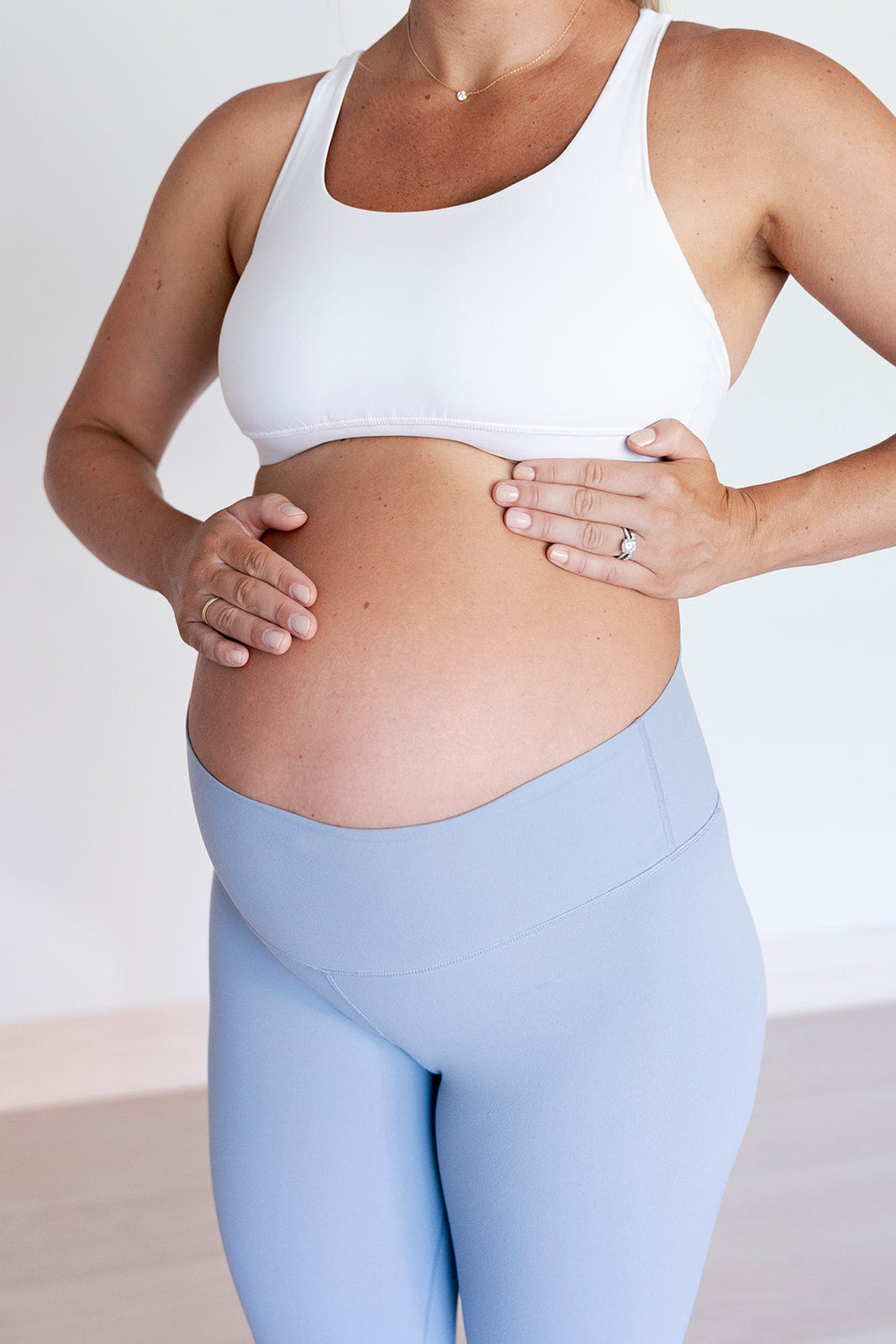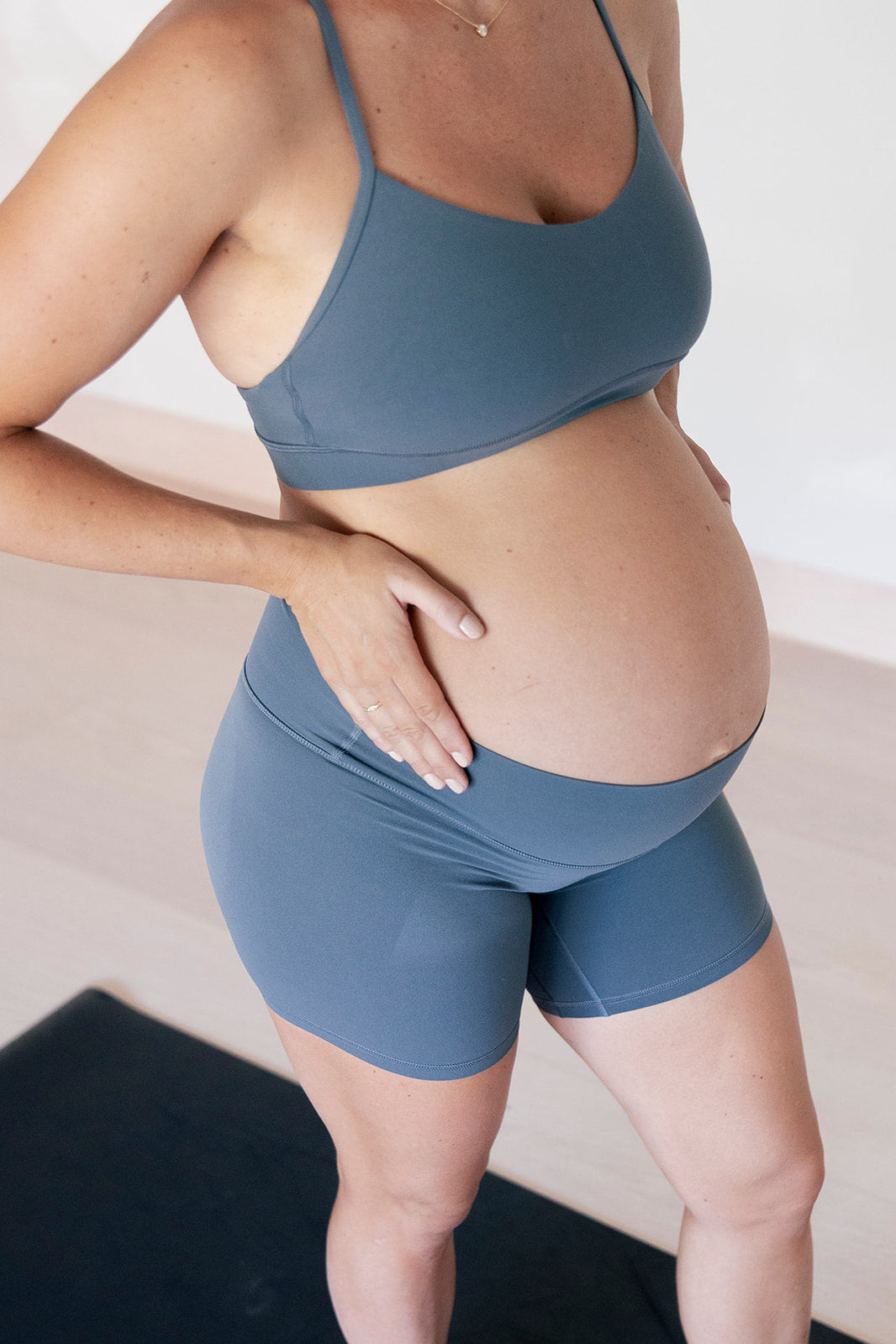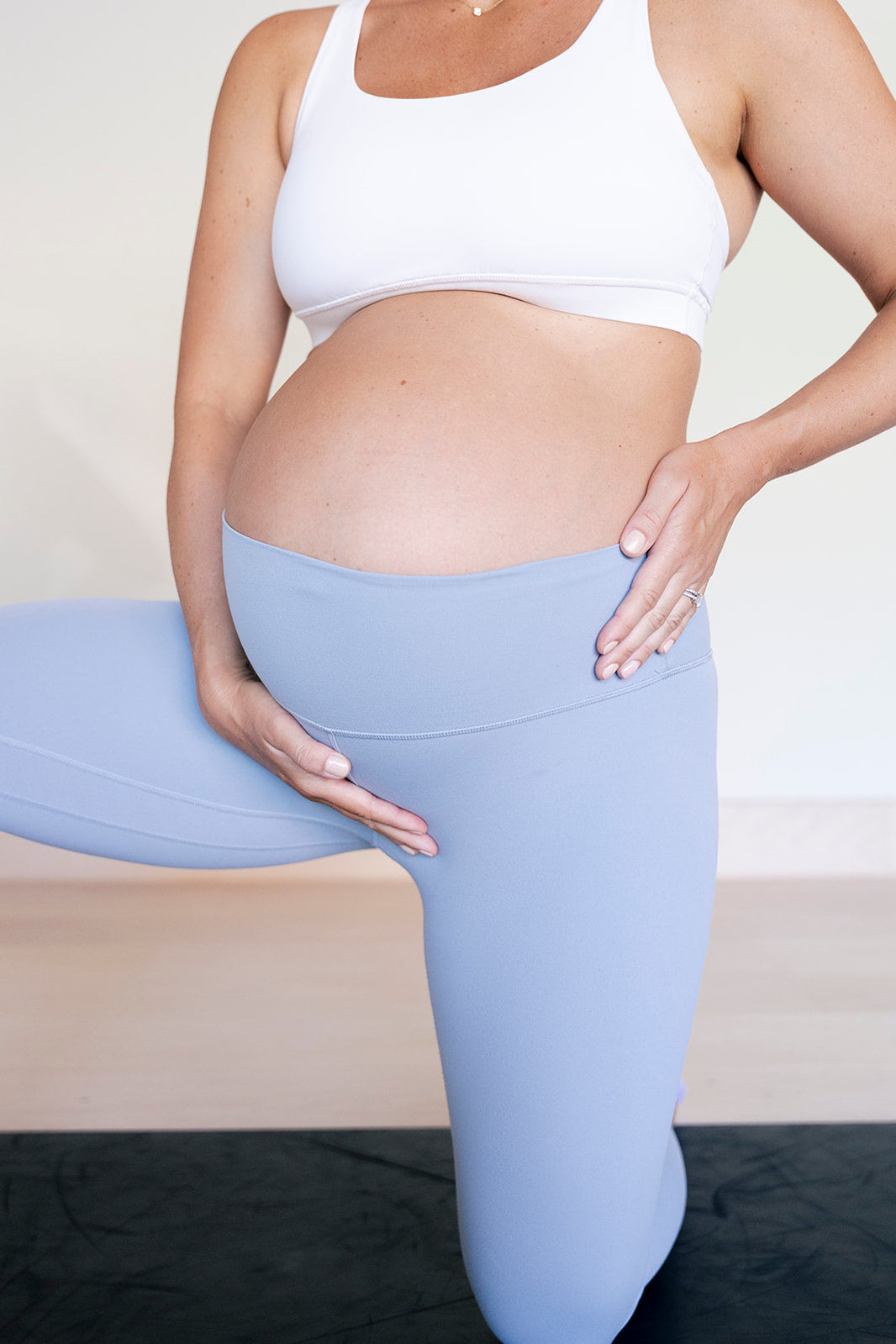Hey Mama, let’s talk about one of those surprising, sometimes painful experiences during pregnancy: round ligament pain. If you’ve ever felt a sudden, sharp pulling sensation in your lower belly or groin, or even in your labia, you’re not alone. This discomfort can catch you off guard, but the good news is that it’s common and—most importantly—there are things you can do to feel better.
Let’s dive into what the round ligament is, why it can hurt during pregnancy, and how you can ease that discomfort so you can feel more comfortable as your baby grows.
What Are the Ligaments of the Uterus?
The uterus is an incredible structure, and it’s supported by several ligaments that help keep it stable as it grows and shifts during pregnancy. These ligaments include:
Broad Ligament: This “sheet-like” ligament helps hold the uterus in place within the pelvis.
Uterosacral Ligaments: These connect the back of the uterus to your sacrum (the base of your spine).
Round Ligaments: These are the ones we’re focusing on today because they’re the most likely culprits behind that sudden pregnancy discomfort.
What Is the Round Ligament?
The round ligament is a pair of thin, cord-like structures that stretch from the uterine horns (the top corners of the uterus) and extend outward and downward. These ligaments travel through the inguinal canal (a passage in your lower pelvis) and attach to the labia majora—yes, the outer part of your vulva!
The round ligament is made of connective tissue and smooth muscle fibers, which are strong but also highly sensitive to tension. During pregnancy, these ligaments go through significant changes:
1. Stretching and Lengthening: As your baby grows and your uterus expands, the round ligaments have to stretch to accommodate the extra weight and size.
2. Hormonal Changes: Pregnancy hormones soften the ligaments to allow for your growing belly, but this can also make them more prone to strain.
What Is Round Ligament Pain?
Round ligament pain is a common discomfort during pregnancy. It’s usually felt as:
• Sharp, sudden pain: A quick pulling or stabbing sensation in the lower belly or groin.
• Labial pain: Since the round ligament attaches to the labia majora, some mommas also feel discomfort or pressure in this area.
• “Lightning crotch” symptoms: A quick, shooting pain in the pelvis or vaginal area, often linked to the stretching of the ligament.
This pain often happens during sudden movements like rolling over in bed, sneezing, coughing, or standing up quickly. It can also be triggered by physical activities like walking, running, or lifting.
While round ligament pain can feel intense, it’s temporary and usually subsides once the movement or activity stops. That said, it’s completely understandable to want relief—and there’s a lot you can do to help.
How to Relieve Round Ligament Pain
The key to managing round ligament pain is to reduce tension and strain on the ligaments while supporting the uterus. Let’s look at some practical ways to feel better.
Exercises for Round Ligament Pain Relief
Gentle stretches and strengthening exercises can help ease tension in the round ligament and surrounding muscles. Here are a few important things to try:
1. Posterior Pelvic Tilt Positioning
This movement helps reduce strain on the front of the uterus and can be done in different positions:
• Posterior pelvic tilt motion: Gently engage your lower abs by pulling your pubic bone up to your sternum, engage your glutes, and tilt your pelvis under. Work on this in standing, lunge position, tall kneeling, and half kneeling. You can either hold this position and breath for a stretch or move in and out of an anterior and posterior pelvic tilt.
• Cat-Cow Pose: Start on all fours, alternate between arching and rounding your back, and focus on tilting your pelvis between an anterior and posterior pelvic tilt to lightly mobilize the round ligament. You can do this by sticking your tailbone outward behind you and then tucking it under. Move in and out of this position
2. Hip Flexor Mobility
Loosening tight hip flexors can reduce tension on the round ligament:
• Half Kneeling with Reach-Overs: In a half-kneeling position, keep a posterior pelvic tilt position, and reach your arm over your head to the opposite side.
• Sidelying Hip Flexor Stretch with Upper Body Rotation: Lie on your side, pull your top top leg backward by using your top arm to grab your foot, and gently rotate your upper body backward
3. Side Body Stretches
Target the sides of your body to release tension in the round ligament:
• Doorway IT Band and Side Body Stretch: Stand in a doorway, cross the leg closest to the doorway in front of the other, and use your outer arm to grab up and over head to stretch your side body farthest from the doorway
4. Inversions
Inverted positions can gently stretch the round ligament and uterosacral ligaments:
• Forward-Leaning Inversion: Kneel on your hands and forearms with your bottom above your head, letting your belly hang toward the floor.
• Downward Dog: A classic yoga pose that provides gentle relief.
External Support for Round Ligament Pain
Sometimes, a little extra support can go a long way in managing round ligament pain.
1. Belly Bands
A belly band can help by lifting and stabilizing your growing belly. This reduces the sudden stretching of the round ligament during activities like walking or transitioning from sitting to standing.
2. Self-Massage
Massaging the round ligament can help relieve tension and improve mobility.
Here’s how to find and massage your round ligament
1. Visualize two lines: one extending 45 degrees down and outward from your belly button, and another 45 degrees down and inward from the top of your pelvis. The meeting point of these lines is where the round ligament typically sits.
2. Feel for a “guitar string”-like structure. This is your round ligament!
3. Gently press inward and upward toward your head to stretch the ligament, or use light circular motions to massage the area.
Take your time and use gentle pressure—this area can be sensitive.
Additional Tips for Managing Round Ligament Pain
• Move Slowly: Avoid quick transitions, like rolling over in bed or standing up quickly.
• Practice Good Posture: Try and work on pelvic and lumbar alignment when you can think of it. Try and avoid rocking your hips excessively far forward and work on keeping the front bones portion of your pelvis and the back bones portion of your pelvis aligned.
• Stay Hydrated: Dehydration can worsen muscle and ligament tightness.
You’ve Got This, Mama!
Round ligament pain is a common symptom of pregnancy, caused by the amazing (and challenging) changes your body goes through to support your baby. While the sharp pains or “lightning crotch” sensations can be uncomfortable, they’re manageable with the right tools and techniques.
By incorporating gentle exercises, external supports, and self-care techniques, you can ease the discomfort and empower yourself to move through pregnancy with more confidence and comfort. And remember, if the pain feels severe, lasts longer than usual, or you’re ever unsure, reach out to your healthcare provider to rule out other causes.
You’re doing an amazing job, Mama! Your body is working hard to grow a tiny human, and there’s so much support and help available to keep you feeling your best. Let me know if these tips help! You’ve got this.



